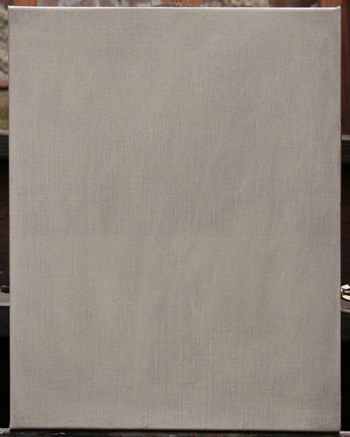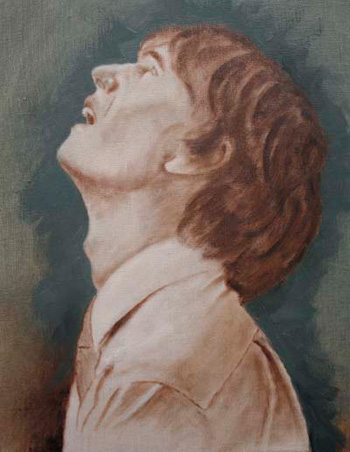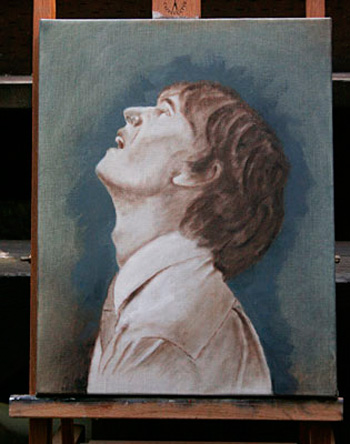Because some people have asked how I work, this page is a brief explanation and a small demonstration.
I paint carefully and slowly, building up paint in layers. In addition, I make almost all of my own paints by hand, using a glass slab and a glass muller. This is a slower process, but to me it is personally satisfying from a point of view of craftsmanship and an enormous respect for the process itself.
With this little portrait, I wanted to try a bit different approach than my usual verdaccio or grisailles underpainting. At the same time, it served as a small study piece for a larger project. The only commercial paint I used is in this project is Gamblin Asphaltum.
The canvas is a Masterpiece brand, oil-primed gallery-wrap, 11×14 inches. I started with a simple gray toning layer of Asphaltum, Ivory Black and Lead White, applied with a rag. I let this dry for a few days. I find that applying a toning layer on an oil-primed surface helps overcome some of the initial slippery feel.
I sketched in the figure using Asphaltum for the darks, and a mix of Lead White/English Raw Sienna for the lights, allowing the gray toning to be a middle tone. I like English Raw Sienna because it’s browner than most of the other varieties. The darker background around the figure is a mix of Raw Umber, Prussian Blue and Lead White, with some additional Asphaltum scrubbed in along the bottom, all done with a palette knife. Again, I let things dry for a couple of days.
I continued developing the figure, again with the same palette of Asphaltum and Lead White/English Raw Sienna.
Finally, I began applying flesh tones as glazes and scumbles, over approximately three sessions. The palette included Titanium Buff, English Raw Sienna, Iron Oxide Orange, Titanium Orange, Burnt Umber, Genuine Vermillion and Manganese Violet. Some segments in the hair were darkened with Asphaltum + Ivory Black, and hair highlights are almost pure Isoindolor Orange.
One of the little tricks I’ve come up with is to make a variety of small piles of grays using whatever I have on my palette that day. Just little small piles of this and that. I make them as I go along. Then, when I want to modify one of my prepared pigments, I use a bit of one of these grays instead of squeezing out something else. Partly this is because I’m a bit lazy. Mulling pigments takes time, so I have a tendency to be sparing with them. Also, because my little mixes contain some of the other colors in the painting, the result is more harmonious.



